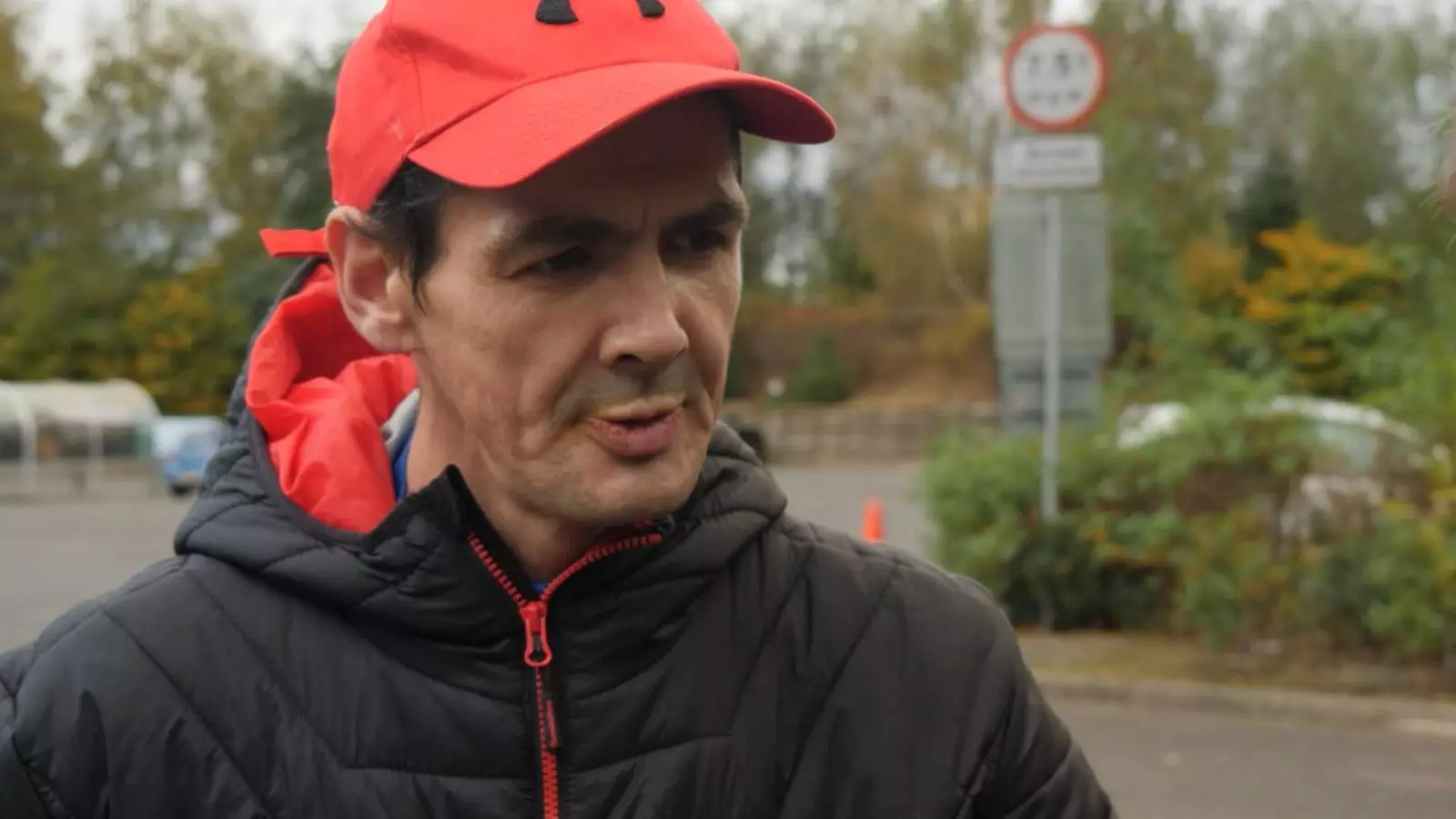In the chilling dawn of Glasgow’s east side, the harsh light of day reveals the stark and unsettling realities of addiction that plague many urban landscapes. Among the lost souls wandering these streets is Chris, a 41-year-old man whose life has spiraled into chaos after suffering immense personal tragedy. His world, largely consumed by heroin, reflects a grim portrait of despair intertwined with a desperate grasp at survival. Chris’s story is not just one of personal turmoil; it symbolizes the larger crisis of drug addiction facing numerous communities across the UK.
Chris’s narrative begins with profound loss; the murder of his mother in 2007 served as a catalyst for his descent into drugs and crime. His journey from a painter and decorator to a street-dwelling addict highlights the systemic failures that abandon individuals in their times of need. The resonance of his experience underscores an urgent question: how do communities address the complex web of loss, mental health, and addiction? His need for heroin, driven by seemingly insatiable cravings, illustrates the consuming nature of addiction that transforms the user, stripping them of dignity and agency.
As Chris strides through the streets, holding a syringe prominently in his hand, he epitomizes a bold but concerning acceptance of his reality. His brash claims about securing heroin at low prices are not mere boastings but reflect a normalized mindset that runs rampant in addiction culture. This notion of bravado is often a mask for vulnerability; yet, it speaks volumes about how addiction has been woven into the fabric of life for many in Glasgow.
Chris’s destination—a makeshift drug den—is an indictment of societal neglect. The area, littered with discarded needles and debris, serves as a gruesome reminder of addiction’s dangerous embrace. As he prepares to inject himself, the juxtaposition of his surroundings against a burgeoning government initiative underscores a larger dialogue on how society views addiction and those ensnared by it. His candid acknowledgment of the “disgusting” nature of his actions reveals a deep-seated awareness of the painful dichotomy between survival and the dignity he’s lost. In these hidden corners where addiction deepens and thrives, communities grapple with the urgent need for solutions.
In a bid to address the escalating drug crisis, the government plans to launch a “safer drug consumption room” in Glasgow. This pre-emptive health strategy aims to provide a secure environment for users, a pivotal shift in how authorities confront drug-related deaths, particularly given Scotland’s troubling statistics. The rate of drug-related fatalities remains alarmingly high, with Glasgow often highlighted as the epicenter of this distressing public health issue. This initiative marks a significant move towards harm reduction, emphasizing medical supervision over punitive measures.
However, the implementation of such a program is fraught with challenges. Critics question whether creating a dedicated space for drug use merely legitimizes what is, fundamentally, a health crisis. There is fear that such facilities may inadvertently encourage usage while diverting resources from comprehensive rehab programs. Chris himself grapples with this skepticism, torn between recognizing the potential benefits and fearing the lack of trust in governmental promises. His comments about the initiative illustrate a broader reluctance among users to embrace offered solutions, exacerbating the cycle of distrust that persists in these communities.
The debate surrounding the safer consumption room extends beyond health into political spheres, where fluctuating policies and public funding allocations create an unstable environment for long-term solutions. The Scottish government has earmarked significant funds—up to £2.3 million annually—for this initiative, revealing both a commitment to change and a reflection of the dire situation on the ground. However, as budget cuts loom over many public services, the question remains: will this commitment lead to genuine improvement, or serve as a temporary fix to a growing epidemic?
The efficacy of these programs will ultimately be judged by measurable outcomes: a decline in drug-related deaths, improved access to rehabilitation services, and a community transition towards healthier coping mechanisms. For individuals like Chris, hope rests in the balance between personal choice and societal support, where shared responsibility could lead to profound change.
Chris’s harrowing truth mirrors the life experiences of many caught in the relentless grip of addiction. As Glasgow confronts its epidemic with innovative harm-reduction tactics, it must also tackle the underlying issues that foster such despair. By prioritizing compassion over criminalization and understanding the multifaceted nature of addiction, communities can forge pathways toward healing. It is crucial not just to create safer environments for drug use, but to foster an ecosystem of care that prioritizes rehabilitation and public health. Only then can the shadows of addiction give way to a brighter, more hopeful future.



Leave a Reply